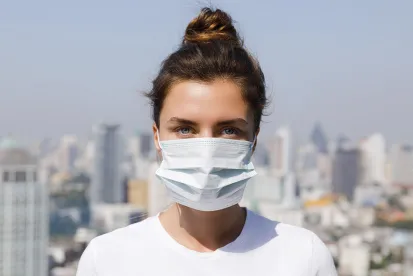On December 16, 2021, the Cal/OSHA Standards Board adopted the third version of the Cal/OSHA ETS with new exclusion and return to work requirements for COVID-19 cases and close contacts.
On December 30, 2021, the California Department of Public Health (CDPH) issued new guidance for Isolation and Quarantine for the General Public. This new guidance contradicted some of the Cal/OSHA ETS requirements for exclusion from the workplace creating confusion among employers.
The main contradiction was that under the Cal/OSHA ETS, employees who test positive and/or who have had a close contact with a COVID-19 case are required to quarantine for 10 days. Under the revised CDPH guidance such individuals may generally end quarantine or isolation after 5 days. Adding to the confusion was the reference within the CDPH guidance that “employers are subject to the Cal/OSHA COVID-19 Prevention Emergency Temporary Standards (ETS)…”
To resolve the confusion, Cal/OSHA has published a “fact sheet” entitled “COVID-19 ETS What Employers Need to Know About the December 16 Standards.” In this sheet, Cal/OSHA states: “The period of time before an employee can return to work after “close contact” or COVID-19 illness has been revised to be consistent with current CDPH guidelines. These time frames will automatically update if CDPH updates their guidelines pursuant to the Governor’s executive order.”
Cal/OSHA appears to be referring to an Executive Order issued by Governor Newsom in 2020, that states that when the Cal/OSHA ETS exclusion period exceeds the CDPH or local quarantine or isolation period, the CDPH or local order applies. That same Order also requires that Cal/OSHA “promptly provide public notice of the change, including through posting a notice on its web page regarding the ETS,” which appears to be satisfied by the fact sheet mentioned above.
As such, quarantine and isolation periods that employers should now follow under CDPH guidance are as follows:
|
An individual who tests positive for COVID-19 |
· Individuals should stay home for at least 5 days. · Isolation can end after day 5 if symptoms are not present or are resolving and a diagnostic specimen collected on day 5 or later tests negative. · If unable to test or choosing not to test, and symptoms are not present or are resolving, isolation can end after day 10. · If fever is present, isolation should be continued until fever resolves. · If symptoms, other than fever, are not resolving continue to isolate until symptoms are resolving or until after day 10. · Wear a well-fitting mask around others for a total of 10 days, especially in indoor settings. |
|
Unvaccinated individuals and vaccinated individuals who are eligible for a booster but have not received the booster who are exposed to a COVID-19 Positive Individual |
· Individuals should stay home for at least 5 days, after their last contact with a person who has COVID-19. · Individuals should test on day 5. · Quarantine can end after day 5 if symptoms are not present and a diagnostic specimen collected on day 5 or later tests negative. · If unable to test or choosing not to test, and symptoms are not present, quarantine can end after day 10. · Wear a well-fitting mask around others for a total of 10 days, especially in indoor settings. · If testing positive, follow isolation recommendations for positive individuals. · If symptoms develop, the individual should test and stay home. |
|
Vaccinated individuals who have received booster or are not booster eligible who are exposed to a COVID-19 Positive Individual |
· Individuals do not need to stay home. · Individuals should test on day 5. · Wear a well-fitting mask around others for 10 days, especially in indoor settings · If testing positive, follow isolation recommendations above. · If symptoms develop, test and stay home. |
Unfortunately, CDPH guidance may be revised again to align with the new Centers for Disease Control (CDC) guidance updated on January 4, 2022. As such, in the coming month, employers may need to be flexible in updating policies and procedures to align with the latest requirements as the situation with COVID-19 continues to be fluid.




 />i
/>i
